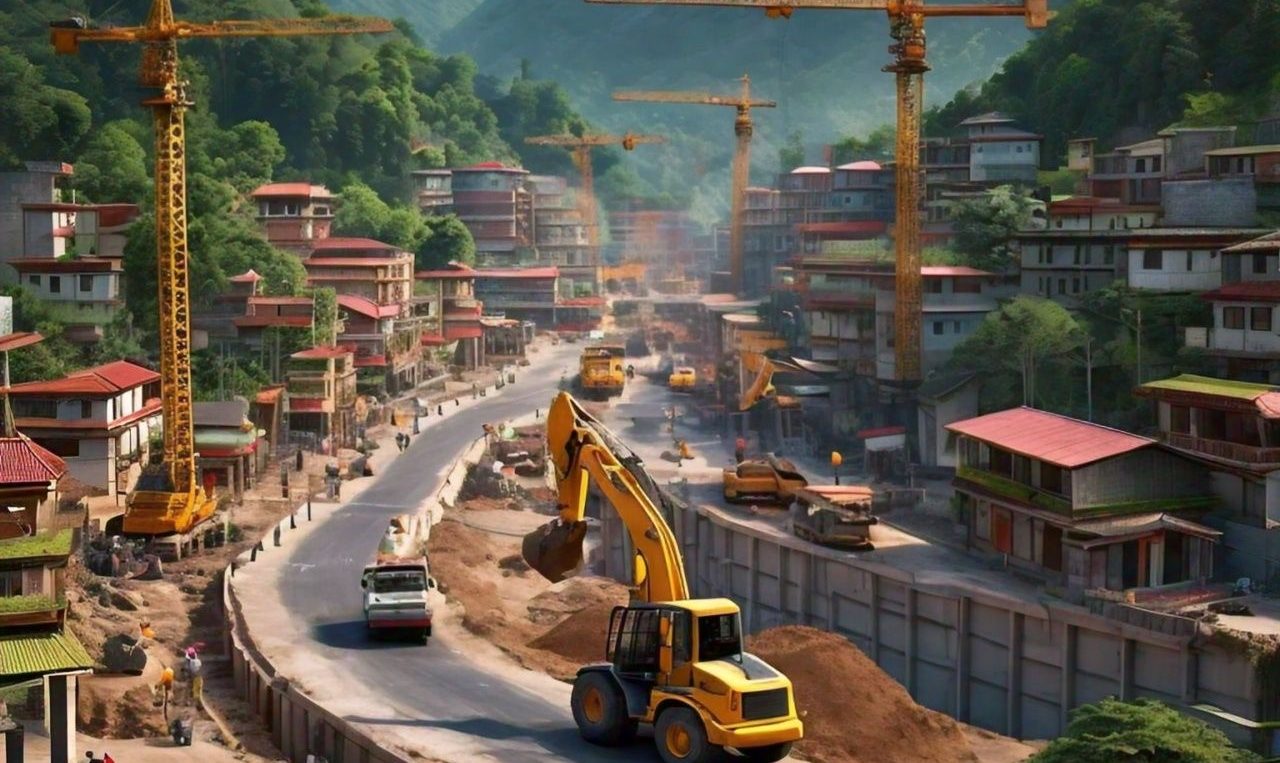India has a very vibrant tech and start-up ecosystem, which has done India proud nationally as well as globally. ‘Nowadays, we are seeing huge interest and enthusiasm among the start-up and tech ecosystem to innovate, develop and promote homegrown apps,” Mr. Modi said. Today, when the entire nation is working towards creating an Atmanirbhar Bharat, it is a good opportunity to give direction to their efforts, momentum to their hard-work and mentorship to their talent to evolve apps which can satisfy our market as well as compete with the world,” he said.
For promotion of existing apps and platforms across the categories of e-learning, work-from-home, gaming, business, entertainment, office utilities and social networking, the government will provide mentoring, hand-holding and support. “Track-01” will work in mission mode for identifying good quality apps for the leaderboard and will be completed in around a month. For incubating new apps and platforms, the “Track-02” initiative will work to help create new champions in India by providing support in ideation, incubation, prototyping, and roll out and market access.
The outcome of this challenge will be to give better visibility and clarity to existing apps to achieve their goals, and to create tech products to find solutions to tech conundrums with the help of mentorship, tech support and guidance during the entire life-cycle, Mr. Modi said.
The government announced the “Atma Nirbhar Bharat Abhiyan” so as to revive every sphere of the economy from demand, supply to manufacturing, and make India self-reliant to sustain and tackle any Black Swan event in the future.
As part of the Atmanirbhar Bharat package announced in May, Finance Minister Nirmala Sitharaman had announced that the Centre has decided to accede to the request and increase borrowing limits of states from 3 per cent to 5 per cent, for 2020-21.
The private sector is our strength. The only thing the government has to do is to unshackle them from the chains of controls and webs of unnecessary regulations. They will make an Atmanirbhar Bharat.
Post Covid 19 -Atmanirbhata : A new platform
The outcome of this challenge will be to give better visibility and clarity to existing apps to achieve their goals, and to create tech products to find solutions to tech conundrums with the help of mentorship, tech support and guidance during the entire life-cycle, Mr. Modi said.
In the backdrop of a raging pandemic, the Prime Minister has given a call for an Atmanirbhar (self-reliant) Bharat. Reflecting on that, we may believe, for India to be self-reliant, it would be essential for our capital markets — which are extremely important for the country’s economic growth — to also be self-reliant. Also we are to be self-reliant in the area of agriculture.
Digital IPOs: We have now also moved our follow-on offerings i.e. rights issue, QIPs and OFSs on a complete electronic platform. While our IPO market is very efficient, moving the IPO issuances too on a digital platform can significantly decongest and simplify the process.
Self-reliance in Agriculture:
Today, our granaries are full and India is Atmanirbhar in staple crops, thanks to those seeds and the research conducted by the Indian Council of Agricultural Research (ICAR) to improve them. Today, India
Exports seeds to its neighboring countries. Even during the lockdown period, hybrid rice seeds were exported through special trains to Bangladesh by the private sector.
Aim to gradually reduce imports in every sector:
The India Skills Report-2020 says that currently, millennials constitute nearly half (47 per cent) of the country’s working population. This is likely to remain the largest chunk of the Indian workforce for the next 10 years. Another important issue that needs to be addressed by all stakeholders is ensuring equitable employment through higher participation of women in the workforce. In the backdrop of the call for Atmanirbhar Bharat, there have been some reassuring developments with an accent on “local to global”. The production of several lakh PPE kits, collaboration of automobile industries to produce ventilators, manufacture of more than 70 Made in India products by the DRDO, development of the low-cost ventilator Prana-Vayu by IIT Roorkee, the products developed by start-ups in Karnataka to tackle COVID-19 are just a few examples of the capability of Indian scientists, IT professionals and technocrats.
Based on the locally available resources, talent, and skills of the human capital, we must aim to gradually reduce imports in every sector from crude oil to heavy machinery.
Self-reliance in Defense:
It is of vital importance for both strategic and economic reasons and has therefore been an important guiding principle for the Government since Independence. Preference will be given to indigenous design, development and manufacture of defense equipment.
For most of the past decade, India has been one of the world’s largest arms importers (accounting for about 12% of global arms imports). However, with 60-70% import-dependence for weapons, spares and ammunition create vulnerabilities during military crises. In order to promote self-reliance in defense production, the government has announced several measures under Atma Nirbhar Abhiyan. Though these steps are in the right direction, there are long-overdue reforms to make India truly self-reliant in defense manufacturing.
Defense Sector Reforms under Atma Nirbhar Abhiyan are as follows:
1. Revision of FDI Limit: The FDI limit in defense manufacturing under automatic route is raised from 49% to 74%.
2. Project Management Unit (PMU): The government is expected to begin time-bound defense procurement and faster decision making by setting up a Project Management Unit (for contract management purposes).
3. Reduction in Defense Import Bill: The government will notify a list of weapons/platforms banned for imports and thus such items can only be purchased from the domestic market.
4. Separate budget provision for domestic capital procurement.
5. Corporatization of the Ordnance Factory Board: It will include a public listing of some units, ensuring a more efficient interface of the manufacturer with the designer and end-user.
In 2007, the Indian Air Force (IAF) came up with a tender for 126 medium multi-role combat aircraft (MMRCA) which saw enthusiastic participation from some of the world’s leading fighter manufacturers and was called ‘mother of all deals.
The statement emphasized the commitment to Prime Minister Narendra Modi’s call for building an atmanirbhar Bharat (self-reliant India).
“Focused on indigenous design and development, these approvals include acquisitions from Indian Industry of 31130 Cr (4.2B),” the MoD statement elaborated on the DAC decisions.
“The equipment’s are to be manufactured in India involving Indian Defence Industry with participation of several MSMEs as prime tier vendors. The Indigenous content in some of these projects is up to 80 per cent of the project cost,” the statement added.
A large number of these projects have been made possible due to Transfer of Technology by DRDO to the Indigenous Industry. These include Pinaka ammunitions, BMP armament upgrades and Software Defined Radios for the Army, Long Range Land Attack Cruise Missile Systems and Astra Missiles for Navy and Air Force.
The Indian quest for replenishing its depleting combat aircraft numbers is a saga of missed opportunities and bad planning. In 2007, the Indian Air Force (IAF) came up with a tender for 126 medium multi-role combat aircraft (MMRCA) which saw enthusiastic participation from some of the world’s leading fighter manufacturers and was called ‘mother of all deals’. The Indian leadership, both political and bureaucratic, planned to achieve many objectives from this deal.
An RFI was issued by India in April 2018 for the procurement of 114 multi-role combat aircraft for the Indian Air Force. As many as eight aircraft are now competing in this fresh tender which is referred as MMRCA 2.0 in the Indian media
Bulk of the capital budget of the IAF is already committed to past liabilities. The 114 aircraft are likely to cost $20 billion. With a backlog of modernization and to rebuild 42 squadrons, government would have to allot additional funds. Any deal for the new fighter would have to have in-built in the contract maximum technology transfer and support for India’s LCA, AMCA, AESA radar and aircraft engine programmers.
Challenges
- India’s quest to buy and locally build 114 new fighter aircraft will be “much more complicated” than the country’s notoriously doomed earlier effort for 126 fighters. In some straight talk from India’s only military airframe, the state-owned Hindustan Aeronautics Ltd (HAL), its chairman R. Madhavan has told Live fist that it is going to be very difficult (for the Indian Air Force) to formulate requirements that cater for deeply disparate aircraft types that have lined up to compete.
For a while now, India’s proposed program to choose a foreign fighter and build it in country through a Strategic Partnership, has reminded observers of the aborted Medium Multirole Combat Aircraft (M-MRCA) procurement program, which consumed years and millions, but didn’t result in a decision to buy and build 126 fighters. Instead, the collapsed deal spawned a separate effort that resulted in India settling for a much smaller quantity — 36 — of the winning aircraft, France’s Rafale
While the ‘Made in India fighter program’ is intended to create aerospace capacity in India’s private sector, HAL already has potential skin in the game. In 2018, HAL unveiled a three-way partnership with Boeing and Mahindra Aerospace to support Boeing’s F/A-18 Super Hornet pitch in the contest. Since then, Boeing has decided to also make available the new F-15EX depending on how the Indian Air Force defines its requirements.
Hope
While the Covid19 pandemic had muddied waters in terms of armament procurement priorities and timelines, border tensions with China have brought those back front and center, possibly offsetting potential delays in programs moving forward.
The ‘Make in India’ initiative by the Government is focusing its efforts on increasing indigenous defense manufacturing and becoming self-reliant. The opening up of the defense sector for private sector participation is helping foreign original equipment manufacturers (OEMs) enter into strategic partnerships with Indian companies and leverage opportunities in the domestic market as well as global markets.
Since 2001, of the 452 industrial licenses issued, 109 were issued in the past three financial years. The proposed investments indicated in the license applications from 2015 to 2019 are worth Rs 13,743.53 crore. In the same period, the government has accorded Acceptance of Necessity (AoN) to 204 proposals worth Rs 4, 04,880 crore, under categories enabling indigenous capital procurement, in which Request for Proposal is issued only to Indian industries.
To push the Make in India initiative in the defense sector and lend a helping hand to the private sector and MSMEs, the Ministry of Defense (MoD) has started identifying projects that can be handed over to them. Sources have confirmed to Financial Express Online that “The MoD has started the process of identifying projects which can be fast-tracked and produced locally in India. This will not only help save the funds but will also help our MSMEs and the private sector.”
Conclusion
Without the defense industrial base being nurtured through real orders, ‘Make in India defense’ through MMRCA 2.0 deal remains a jumla. The Indian private sector cannot do anything until they get actual commercial contracts or orders. Still they are worried about the duopolistic defense manufacturing leadership of HAL and DRDO. Big contracts had not been signed yet due to budgetary constraints of Govt. of India and the matter is expected to face a big challenge due to corona pandemic. Still we cannot give up our hope since the ‘Make in India’ initiative is already in the process of simplifying the policies of private players. India slowly seems to have realized that the defense PSUs have their constraints and they cannot perform everything the Indian armed forces want. Global OEMs have been asked to produce the equipment in India with either of the PSUs or a private sector manufacturer. In spite of several roadblocks, the Indian private sector has achieved a significant level of maturity in locating acquiring, absorbing and executing on the transfer of technology from 5he foreign sources. Just they need bulk commercial orders.
‘Make in India in defense ‘ has never been an easy task as it required niche and state-of-the-art technology. Moreover, global leaders of defense manufacturing will never allow any country to promote indigenous industry. We have to face this challenge and wait for some years.







